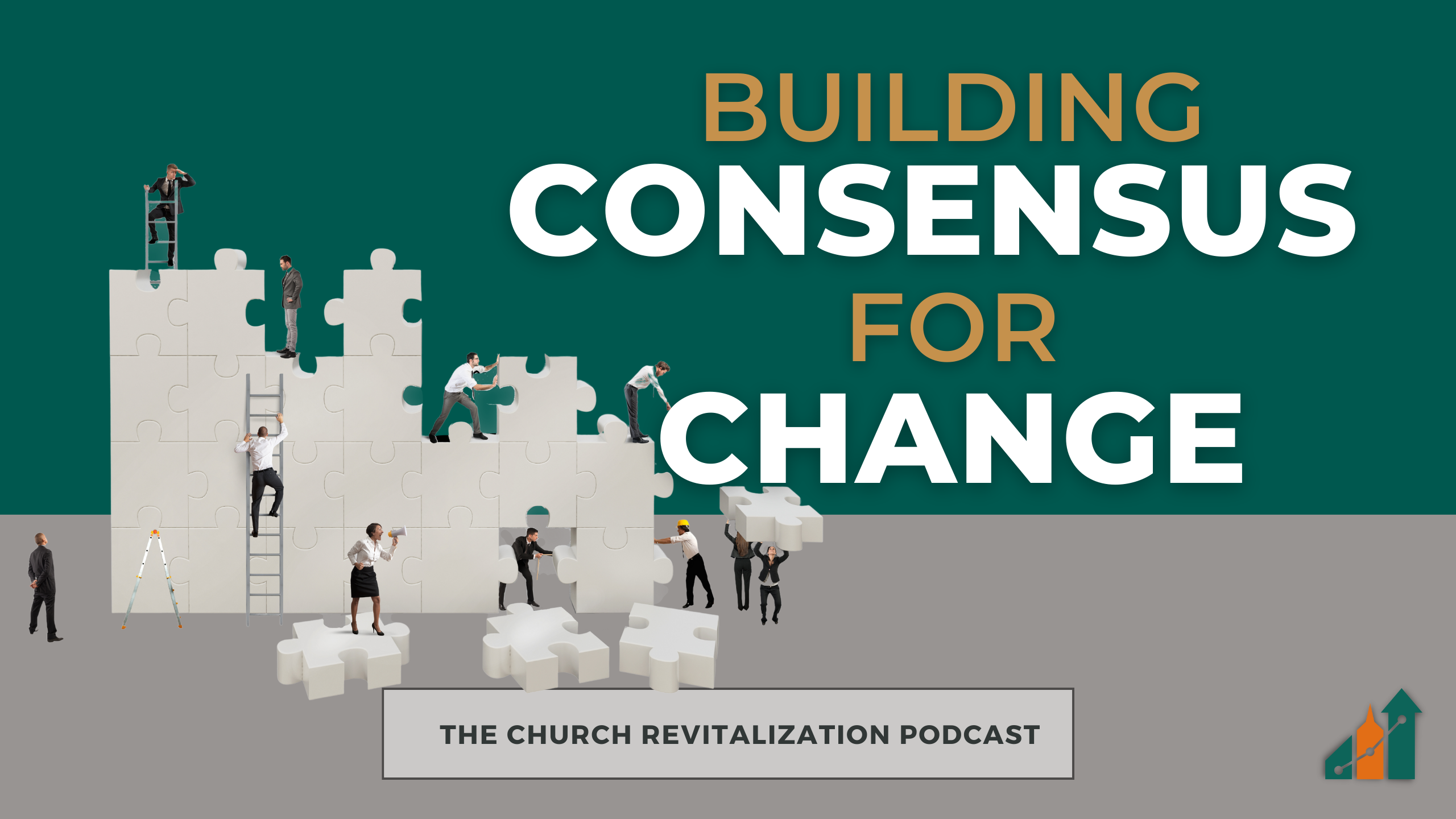The Church Revitalization Podcast – Episode 193
It’s a frustrating position to be in, thinking you’re the only one that wants to see positive change in your church. That might really be the case, or it may just be that nobody has yet dared broach the topic. It might as well be you!
We’ve had these calls many times. It may be a lay leader, a board member, or even the pastor. The environment they find themselves in is that the church is declining, and nobody seems to be talking about it. In more challenging circumstances, senior leadership seems resistant to change, but one or more lay leaders see the writing on the wall and would like to do something about it. The message they see is that the church is headed for death. They want to sound the alarm, but there are a lot of relational factors at play that prevent them from speaking up. When they reach out to us, it’s usually an investigation into what the options may be. It’s a fact-finding mission.
Unfortunately, the environment that allowed this to even come into existence is unhealthy and dysfunctional. At some point in the church’s past, a culture of not communicating well began. That was coupled with a culture of not monitoring health indicators in the church. That was allowed because a focus on evangelism and discipleship outcomes was not built in. It’s a cascade effect that takes the church from thriving to just surviving to struggling.
So how can you move from something you’re just thinking about to a movement toward change? We’ve mapped out the first four steps below.
Subscribe below to never miss an episode.
1. Understand the environment
When you’re all alone or think you are, you first have to understand the structure, processes, and personalities that are making the decisions in the church. Only then can you begin to map out a plan. You have to know where you may find allies, what their level of influence may be, and even understand your own level of influence.
I realize this may all begin to sound sinister and manipulative, but it’s really just strategy and relationships. There’s a lot at stake here. The life of the church and the souls of those God wants it to reach depends on the health of your church. If you’re to be the catalyst, you need to be strategic so as to work towards the best possible outcome.
People can be difficult to deal with, so we have to work the situation in the most productive, loving, and gentle way we can. Cowboys with guns blazing may get what they want in certain environments, but a more careful approach with an eye on honoring people and enlarging the numbers who want to work towards a better future is the way to sustainable positive change.
It’s important to remember that short-term changes that may placate some small group in the hopes of gaining their support is more likely just create bad habits that will be harder to overcome later.
2. Start Small
Who can you trust to have the first conversation with? Get their feedback on whether you’re seeing things clearly. This does not mean that every Sunday you conduct covert parking lot meetings to tried to build a coalition. That’s more the makings of a coup d’etat than a respectful, sincere look at whether you’re seeing things clearly or not.
Consider what we see in Nehemiah 2:11-13. “I went to Jerusalem, and after staying there three days I set out during the night with a few others. I had not told anyone what my God had put in my heart to do for Jerusalem. There were no mounts with me except the one I was riding on. By night I went out through the Valley Gate toward the Jackal Well and the Dung Gate, examining the walls of Jerusalem, which had been broken down, and its gates, which had been destroyed by fire.”
With a few trusted individuals Nehemiah inspected the condition of the walls before bringing the topic of rebuilding up with the officials.
3. Add a dose of reality
Once a few people are in agreement that you should at least keep talking about the issues, it may be time for some more objective data points. The Church Ministry Analysis that we offer here at The Malphurs Group has served as the tool that many leaders like you have used to move the conversation forward and remove themselves from being the bearer of bad news. An objective report from a third party is sometimes the wake-up call that people need to recognize where the church has descended to.
In Nehemiah 2:17 he says, “You see the trouble we are in: Jerusalem lies in ruins, and its gates have been burned with fire. Come, let us rebuild the wall of Jerusalem, and we will no longer be in disgrace.”
Notice that Nehemiah states the condition of the walls as a point of fact. It was obvious to everyone, so it wasn’t a debatable topic. There will be plenty of debate later on the strategy your church should take to rebuild, but if its condition is dire, few if any will refute the obvious.
4. Expand the Support
Once a small team of leaders is in agreement that there are issues and that solutions should be investigated, the force required usually begins to ease up. Now the focus is on gaining momentum and support from a larger group of leaders and stakeholders. Your church’s polity will drive what steps are required next to move toward a decision on moving forward with a revitalization plan. Can a church council move this forward or do you need a congregational vote? You may have learned this about your church back in step one.
One thing is certain. Once the need for change is out in the open, nobody can unsee it or become unaware. The voice now is to do something about it or not.
Watch this episode on YouTube


A.J. Mathieu is the President of the Malphurs Group. He is passionate about helping churches thrive and travels internationally to teach and train pastors to lead healthy disciple-making churches. A.J. lives in the Ft. Worth, Texas area, enjoys the outdoors, and loves spending time with his wife and two sons. Click here to email A.J.

